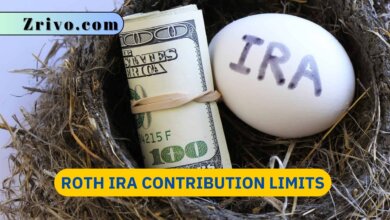457 Plans
This article will provide comprehensive information about 457 plans, including their benefits, contribution limits, and withdrawal rules, helping readers understand and make informed decisions about their retirement savings.

Contents
457 plans are tax-advantaged retirement savings plans available to certain employees of state and local governments, as well as some nonprofit organizations. These plans are named after the Internal Revenue Code section governing them. A 457 plan allows eligible individuals to save for retirement by making contributions from their salary on a pre-tax basis, meaning the contributions are not subject to federal income taxes until withdrawn.
To be eligible for a 457 plan, you typically need to be employed by a state or local government entity or a qualifying nonprofit organization. This includes employees such as teachers, firefighters, police officers, and government administrators. The specific rules regarding eligibility may vary, so it’s important to consult with your employer or plan administrator for the exact requirements.

What Do 457 Plans Offer?
One of the key features of a 457 plan is its flexibility in terms of contribution limits. Unlike other retirement plans like 401(k) or 403(b) plans, 457 plans have higher contribution limits. In 2024, the maximum annual contribution limit for a 457 plan is $19,500. However, if you are within three years of your plan’s designated retirement age, you may be eligible to contribute even more. This provision is called the “double-up” or “catch-up” feature and allows you to contribute up to twice the annual limit in the three years leading up to your plan’s normal retirement age.
Another notable feature of 457 plans is the absence of the early withdrawal penalty. Typically, most retirement plans impose a 10% penalty on withdrawals taken before the age of 59 ½. However, with a 457 plan, if you separate from service with your employer, you can withdraw funds penalty-free, regardless of your age. It’s important to note that while the penalty is waived, the withdrawals are still subject to federal income taxes.
457 Plan Withdrawal Rules
The withdrawal rules for a 457 plan depend on the type of 457 plan you have: a governmental 457(b) plan or a non-governmental 457(b) plan.
For a governmental 457(b) plan, you can generally withdraw funds penalty-free after you reach age 59½. However, if you separate from service, an option called “substantially equal periodic payments” allows you to withdraw funds before reaching the age of 59½ without incurring a penalty.
On the other hand, non-governmental 457(b) plans have stricter withdrawal rules. Withdrawals can only be made upon certain triggering events, such as retirement, disability, or a financial hardship. In some cases, early withdrawals from non-governmental 457(b) plans may result in a penalty.
It’s important to note that withdrawals from both types of 457 plans are generally subject to income tax, as the contributions were made on a pre-tax basis. Consulting with a financial advisor or referring to the specific plan’s guidelines is recommended to fully understand the withdrawal rules that apply in your situation.

Differences Between 457 Plans and Other Plans
In terms of differences between 457 plans and other retirement plans like 401(k), 403(b), and 401(a) plans, there are several distinctions. First, private sector employers offer 401(k) plans, while 403(b) plans are available to employees of certain tax-exempt organizations such as educational institutions, hospitals, and nonprofits. 457 plans, as mentioned earlier, cater specifically to employees of state and local governments and some nonprofits.
In terms of contribution limits, 401(k) and 403(b) plans also have a maximum annual contribution limit of $19,500 in 2024, just like 457 plans. However, 401(k) plans offer an additional catch-up provision for individuals aged 50 or older, allowing them to contribute an extra $6,500 per year. 403(b) plans also have a catch-up provision, but the limits and rules may vary.
On the other hand, 401(a) plans are employer-sponsored retirement plans that can be found in both the public and private sectors. The employer generally funds these plans, and employees do not typically contribute their own funds. The contribution limits for 401(a) plans can vary depending on the specific plan provisions.

457 Plans and Other Plans
| Feature | 457 Plans | 401(k) Plans | 403(b) Plans | 401(a) Plans |
| Employer Type | State and local governments, some nonprofits | Private sector employers | Tax-exempt organizations (e.g., schools, NGOs) | Public and private sector employers |
| Contribution Limit | $19,500 (2023), potential catch-up provision | $19,500 (2023), additional catch-up provision | $19,500 (2023), potential catch-up provision | Employer-defined, varies by plan |
| Catch-up Provision | Yes (up to twice annual limit within 3 years) | Yes (additional $6,500 for ages 50 or older) | Yes (vary by plan and age) | Varies by plan |
| Early Withdrawal | Penalty-free upon separation from service | Penalty applies before age 59 ½ | Penalty applies before age 59 ½ | Penalty may apply, varies by plan |
| Employer Match | Varies by employer | Varies by employer | Varies by employer | Varies by employer |
| Investment Options | Determined by plan provider | Determined by plan provider | Determined by plan provider | Determined by plan provider |
| Portability | May be rolled over to another eligible plan | May be rolled over to another eligible plan | May be rolled over to another eligible plan | May be rolled over to another eligible plan |
| Tax Treatment | Pre-tax contributions, taxable upon withdrawal | Pre-tax contributions, taxable upon withdrawal | Pre-tax contributions, taxable upon withdrawal | Pre-tax contributions, taxable upon withdrawal |





